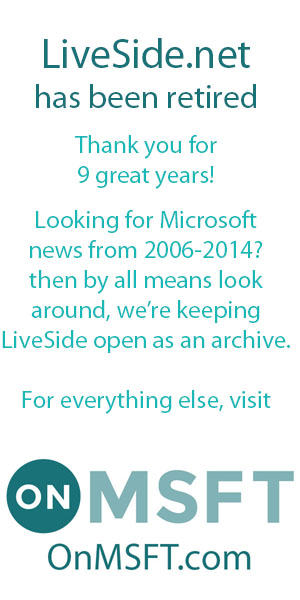So yeah it’s kind of a slow news week, not much happens just before the holidays, when things will really shut down. But there’s been quite a conversation going on among the blogs about Enterprise v. Consumer/Microsoft v. Google/Old Way v. Web 2.0, which kind of started when we posted the Bill Gates transcript from Mix n Mash. Just to recap, here’s a set of links to the conversation:
Google Gets Ready to Rumble with Microsoft – NY Times
Google and the Wisdom of Clouds – MSNBC
Overnight Success – Steve Gillmor on Ray Ozzie
Microsoft in Denial: Google Threat is Classic Disruption – Henry Blodget
MS v Google = Search + Apps – Dan Farber ZDNet
Is Eric Schmidt Leading Google Over a Cliff? – RatDiary.com
As Microsoft Knows, There’s More Than One Way to Disrupt a Market – Mary Jo Foley
I’m sure there are many more. However, all of this discussion seems to boil down into a set of main themes: a) we are moving toward more cloud based computing, b) that may be a threat to Microsoft, and c) for the first time in a long time Microsoft may be facing some real competition. So the big question is, what is Microsoft’s response? Is Microsoft an old-school software company, waiting to be disrupted and toppled? Or do they have some tricks left up their sleeve?
The answer, or at least a big part of the answer, lies in FeedSync. First announced in 2005 by Ray Ozzie (then called SSE), this set of RSS enhancements is going to be a backbone of one of the key concepts of Software + Services. Microsoft is betting heavily that the desktop, and rich desktop applications, are not going away, but that the ability to synchronize content from the desktop to the cloud, and from desktop to laptop to phone, all from the cloud (or from other devices), offers advantages that pure cloud computing just can’t. Here’s what Steve Gillmor said:
This is not a Google Apps versus Office fight, therefore. This is an Office versus Office fight. If there is no perceptual difference between Office HardDrive Edition and Office Cache Edition, users won’t care and will move based solely on ease and lowered cost of deployment. And guess who knows a hundred times more than Bill Gates about this. Scott Guthrie and at the uber level, The Father of Replication aka sync aka intelligent caching Ray Ozzie. Not pigeonholing Ray here, just pointing out work that in Ray’s case started in the 20th Century with Notes. This is Ray’s plan, folks.
FeedSync uses RSS or Atom to synchronize all kinds of data – it’s interesting in these examples from the site that the calendar reference is used:
because as much as FeedSync is an open source project, with a Creative Commons license, Microsoft has current big plans for FeedSync. Just look at the RSS generated by a Windows Live Calendar feed, which currently has no sync capabilities, something that put it out of the running as a serious competitor to Google Calendar when it was released into beta:
It looks like Calendar will be one of the first Windows Live applications to use FeedSync. There are most certainly others. In a podcast published last week, Jon Udell talks with Steven Lees of Feedsync, who mentions Favorites as a Feedsync possibility, as Lees also did in his presentation to us at Mix n Mash. No concrete news there, but a Feedsync’ed version of Windows Live Favorites makes a lot of sense.
Don’t think, however, that Microsoft is thinking small with Feedsync. Bill Gates, in his remarks to us, said:
And there are some high level services. Still today you have too many passwords, too many accounts. Any preferences you state just kind of stay in one place. Moving things cross-Web is still way too difficult. So, we have some new ideas that we can expose about that that will hopefully move the Web — help it move at the incredible pace that it’s been going along.
You know, MIX has become a great event for us, and I’m certainly in a lot of meetings where we’re developing neat new stuff, and people say, well, will it be done by MIX or why don’t you hold that till MIX. So, along with the PDC, which is more just the basic platform type things, I’d say MIX is our most important event for what we’re doing in terms of developer technology.
We expect to see Microsoft making significant use out of Feedsync, and sooner rather than later. As soon as Mix? Well, that’s why we’re going :).



